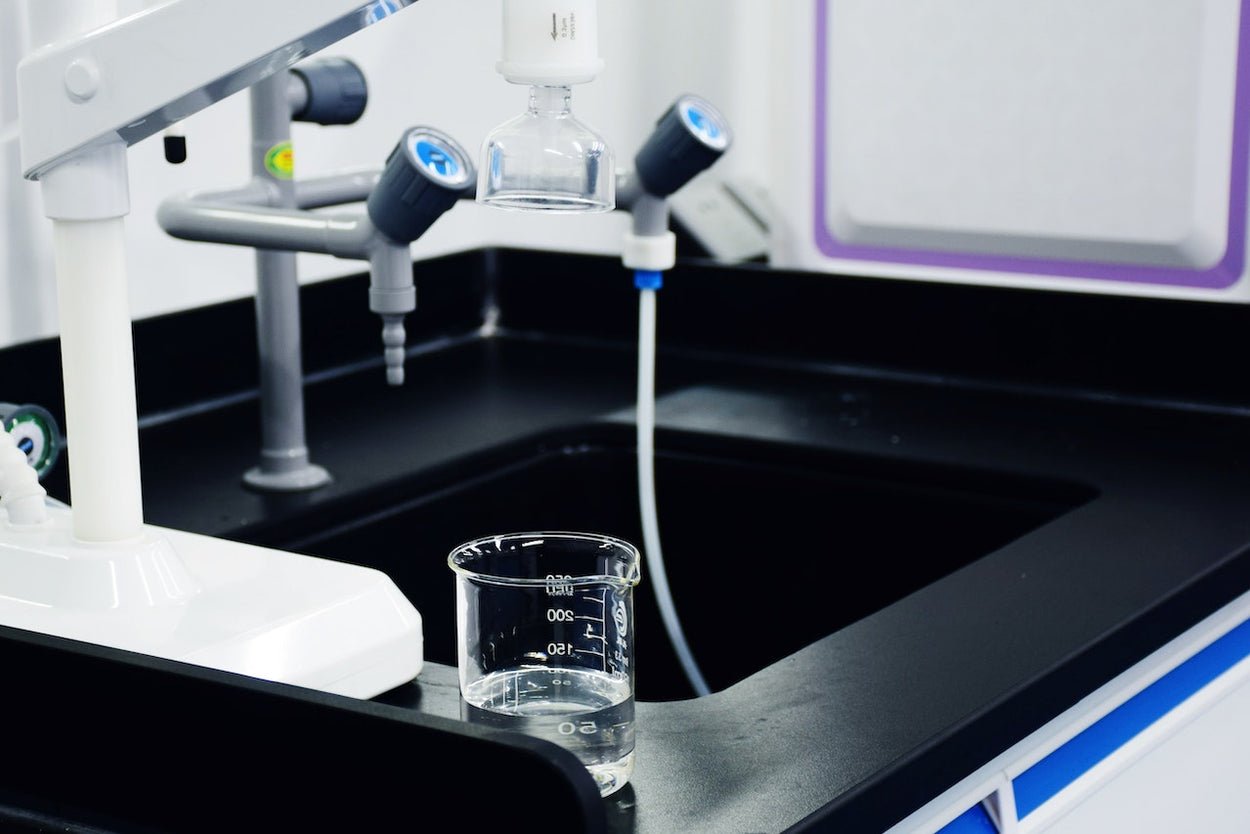Here's our guide on how Reverse Osmosis water purification works.
Q. WHAT IS THE MEMBRANE AND HOW DOES IT WORK?
A. The membrane consists of several thin layers or sheets of film that are bonded together and rolled in a spiral configuration around a plastic tube. (This is also known as a thin film composite or TFC membrane.) The material of the membrane is semi-permeable; it allows water molecules to pass through while acting as a barrier to dissolved solids (i.e., mineral & chemical contaminants). The pores of the membrane are too small for the contaminants in water to pass through them.

If you look at our page on "Dangers from Unpure Water," it tells you about the contaminants in our water sources. Some of these contaminants are microscopic, as the following chart shows you:
A high quality membrane is a much better strainer than a simple filter which attaches to your faucet or sits on the counter-top. The photos below were taken with a Scanning Electron Microscope (SEM) at 8000x magnification. The photo on the left shows that the pores of a RO membrane are undetectable, while the pores of a pleated filter on the right are easily seen:


As this diagram shows, a high-quality membrane will prevent even the smallest bacteria from entering your drinking water.

Q. CAN YOU EXPLAIN OSMOSIS?
A. A high quality R.O. membrane is "semi-permeable," which means that it allows water to pass through but prevents dissolved particles from passing through. If you place a membrane between two compartments as in the container shown below, and then place salt water in one half of the container and pure water in the other half, a fundamental scientific principle comes into play. That is, two different concentrations of liquids within the same system will try to reach equilibrium (i.e. the same concentration of contaminants) on both sides of the membrane. Of course the only way for this to happen is for pure water to pass through the membrane to the salt water side in an attempt to dilute the salt solution. This attempt to reach equilibrium is called OSMOSIS.

Q. WHAT IS REVERSE OSMOSIS?
A. Reverse Osmosis is the reversal of the natural flow of osmosis. In a water purification system, the goal is not to dilute the salt solution, but to separate the pure water from the salt and other contaminants. When the natural osmotic flow is reversed, water from the salt solution is forced through the membrane in the opposite direction by application of pressure - thus the term REVERSE OSMOSIS. Through this process, we are able to produce pure water by screening out the salts and other contaminants.

Q. WHAT HAPPENS TO THE CONTAMINANTS?
A. The reverse osmosis process cannot go on indefinitely without removing the contaminants. Ultimately the membrane could become clogged by salt and other impurities, requiring increasingly greater pressure to force water through the membrane. To solve this problem, the membranes are configured to split the feed water into two streams -- one part to be purified and the other part to wash away the particles rejected by the membrane.

Q. WHAT IS THE ACTUAL PROCESS OF A REVERSE OSMOSIS SYSTEM?
A. With our RO System, the raw tap water first flows through a 1 micron SEDIMENT FILTER to remove dirt, rust and other sediment. The water then flows into a 5 micron CARBON FILTER which takes out 99% of the chlorine and organic chemicals. The water proceeds to the Automatic Shut-off (ASO). If the tank is full, all the inlet water stops there. If the tank is less than full, the water continues. The next stage of the process is the reverse osmosis membrane which will separate 95-99% of the dissolved contaminants from the water molecules. The contaminants are then washed down the drain.

The next stage of the process is the small carbon POST FILTER that removes the remaining traces of chemicals, tastes and odors. The R.O. water is stored in a 3 gal. TANK. Inside the tank is a balloon-like rubber diaphragm, pre-charged with 7 psi of air. As the tank fills, the air pressure increases and pressurizes the water so that it flows to the FAUCET without a pump. The faucet is installed on the kitchen counter or the sink. It is a dual action faucet offering intermittent flow (to fill a glass, hold the handle down) or continuous flow (to fill a coffee pot, lift the handle up).

